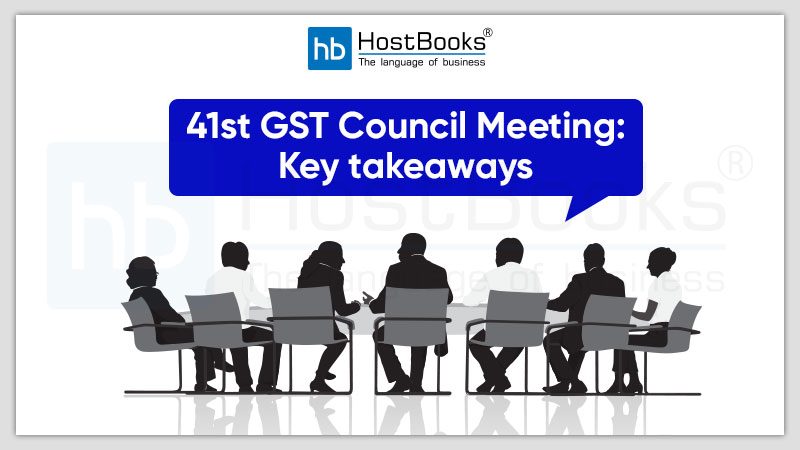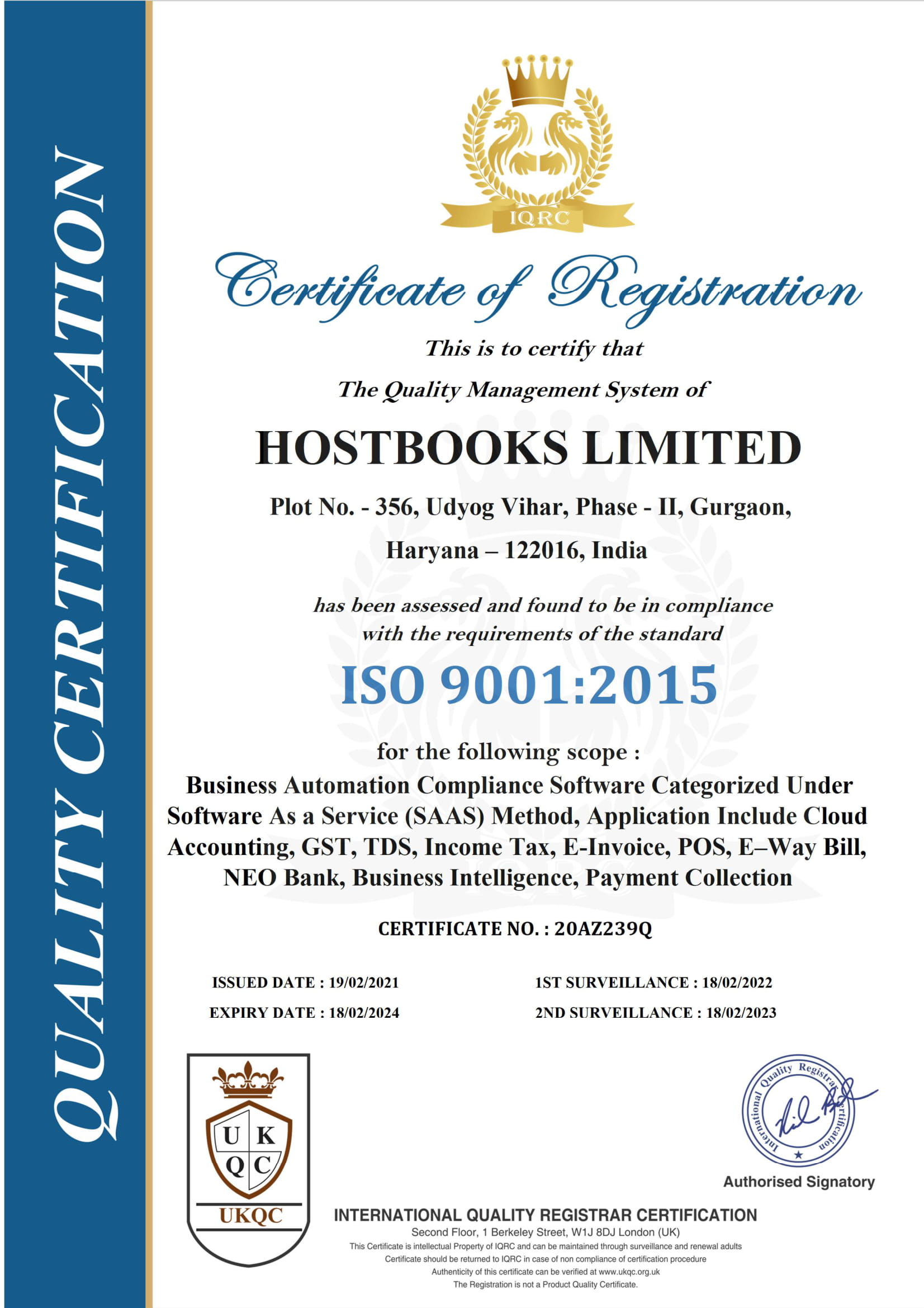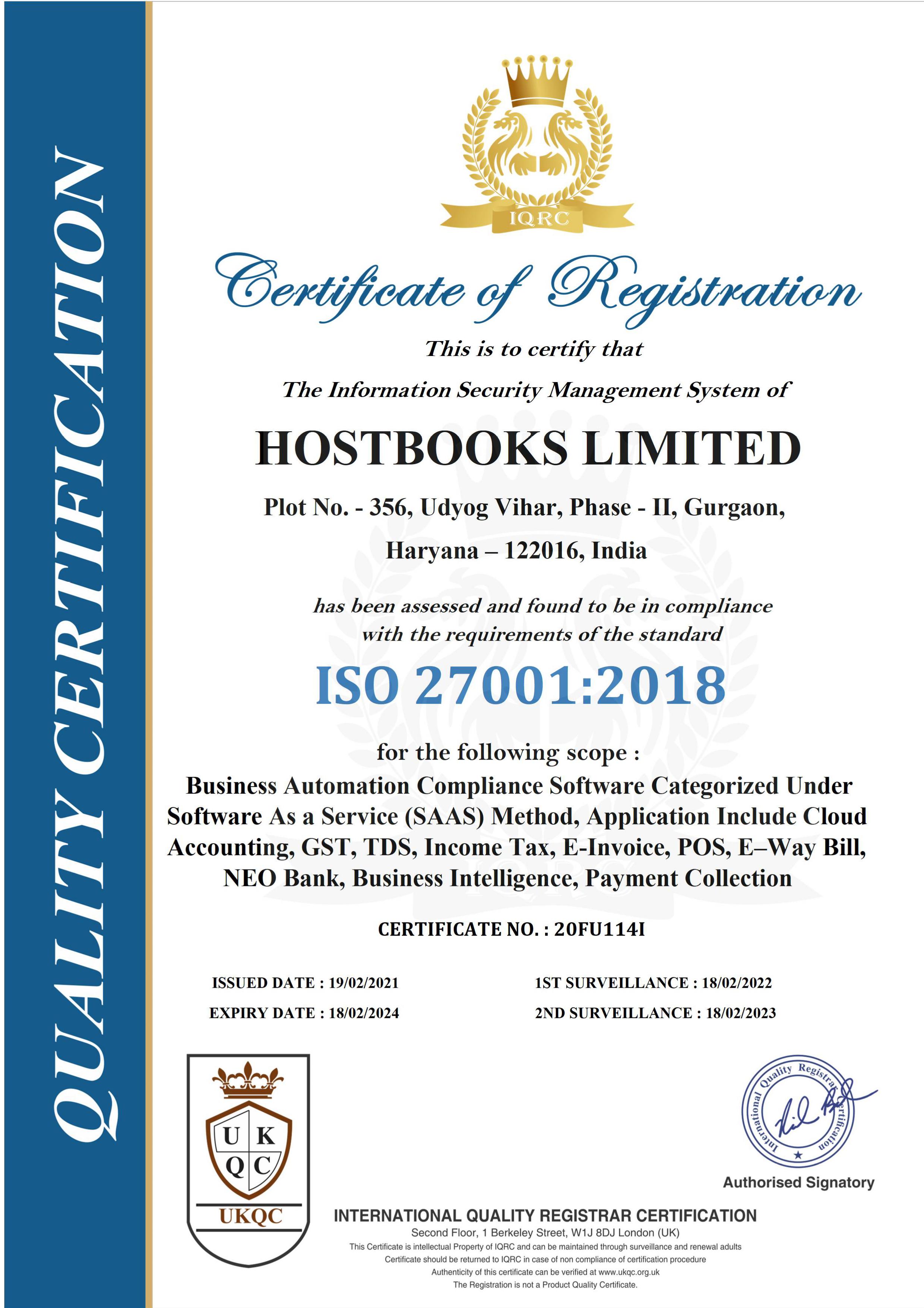
How Cloud Accounting is Helping Small Businesses Grow
August 11, 2020
Eway Bill Rules, Generation and Compliance: A Comprehensive Detail
September 15, 202041st GST Council Meeting: Finance Minister Nirmala Sitharaman said that centre can facilitate borrowings from RBI but the loans will be in the name of states. Two options were placed before states, including the option that centre will facilitate talking with RBI and help to get G-security linked interest rates so that each state does not have to struggle for loans. She added that the states have requested the government to lay down both options in detail, and give them 7 full working days to deliberate on it and get back. Further, a brief GST Council meeting is likely to be held soon. The finance ministry also said that if a state goes for Option 1, it will borrow less, but its compensation entitlement will be protected. So, the choice is between i) borrowing less & getting cess later, & ii) borrow more & pay for it using cess collected during the transition period. The GST Council today met for the 41st time amid a heated debate on providing compensation cess to the states. While the promise of the center of compensating revenue loss below 14 per cent growth till 2022 seems to be a daunting task to fulfil, the states and the opposition party have been consistently raising the issue of a revenue shortfall.
- 131 crore e-waybills generated, out of which about 40% are for the inter-state transport of goods.
- Filing of “Nil” GST returns through the SMS facility from the registered mobile number has been introduced which is expected to help almost 22 lakh Nil filers. A big step forward towards enhancing taxpayers’ convenience:
- With effect from FY 2019-20, the Composition Scheme was extended to suppliers of services (up to Rs.50 lakh turnover). Further, composition taxpayers were allowed to furnish returns on an annual basis only, as against having to file quarterly returns as was the case earlier.
- The GST Council simplified the annual returns and filing was made optional for small taxpayers having turnover up to Rs 2 crore for both 2017-18 and 2018-19:
- The number of e-waybills generated has been growing steadily, with the highest single-day generation (25,19,208 e-waybills) taking place on 29.02.2020)
- Agriculture sector gets concession on GST on fertilizers; the net tax incidence was halved in GST. On agricultural machineries, the tax incidence has come down significantly from 15-18% to 12% and on certain items from about 8% to 5%:
- GST system significantly brings down tax on chemical fertilizers. The pre-GST tax incidence on chemical fertilizers was above 10%. While in the GST regime all types of chemical fertilizers only attract a 5% tax rate:
- Cattle feed, aquatic feed, and poultry feed attract nil GST. These vital inputs in the agricultural process do not attract any tax under the GST system.
- Daily use items are in zero or 5% GST slab. The construction of residential complexes saw a steep reduction in rates to 5% in general and 1% for affordable houses. Restaurants were also brought down to 5%:
- FM Sitharaman says tax on home appliances such as fridges, washing machines, vacuum cleaners, food grinders & mixers, vegetable juice extractor, shavers, hair clippers, water heaters, hairdryers, electric smoothing irons, TVs (up to 32 inches) fell from 31.3% to 18% due to GST.
- Moviegoers get major relief with GST. The tax on cinema tickets, earlier anywhere between 35% to 110%, has been brought down to 12% and 18% in the GST regime:
- Taxpayer base has nearly doubled GST roll out. The numbers of assessee covered by the GST at the time of its inception were about 65 lakh. Now the assessee base exceeds 1.24 crore.
- Concern on compensation cess not discussed in meeting.
- Centre can facilitate borrowings from RBI but the loans will be disbursed in the name of states.
- Centre will be left with a gap of Rs 2.35 lakh crore in current fiscal.
- GST Collection has been severely impacted this year, due to coronavirus. As per GST Compensation Law, states need to be given compensation.
- Centre’s first option to states, to provide a special window to states, in consultation with RBI, to provide the Rs 97,000 crore at a reasonable rate of interest, this money can then be repaid after 5 years from collection of cess:
- Second option to states from center, Entire GST compensation gap of Rs 2,35,000 crore of this year can be met by the states, in consultation with the RBI
- 7-day window for states options would be available only during the current year, situation would be reviewed next year and the decision made on what is best for the country
- Shortfall in compensation due to implementation of GST has been estimated to be Rs 97,000 crore, the shortfall in compensation due to implementation of GST has been estimated to be Rs 97,000 crore without consideration of shortfall due to the coronavirus as well.
- Compensation gap cannot be met from the Consolidated Fund of India, The Attorney General’s suggested that the compensation cess levy can be extended beyond 5 years, to meet the shortfall.
- GST Compensation has to be paid for transition period – from July 2017 to June 2022.
- No decision on GST rate cut on 2-wheelers in today’s meeting
- Annual GST compensation requirement estimated around Rs 3 lakh crore and cess collection is expected to be around Rs 65,000 crore, leaving us with an annual compensation gap of Rs 2.35 lakh crore. During April – July 2020, total GST compensation to be paid is Rs 1.5 lakh crore.
- Compensation options shall be available only for this year, In April 2021, the Council will review and decide action for 5th year, says FM.
- Centre to facilitate talking with RBI and help to get G-security linked interest rates to states so that each state does not have to struggle for loans.
- Brief GST Council meeting may be held again to States have requested to lay down both options in detail.
- Tranches of states’ borrowings, an increase of 3% to 3.5% (of state GDP) in states’ borrowing limit is unconditional. Next 1% increase to be released in 4 tranches, each one linked with specific reforms. Last 0.5% given when milestones in at least 3 of 4 conditions are achieved.
- Enhanced borrowing limit to be linked to specific reforms to benefit poor such as One Nation One Ration Card, Ease of Doing Business, and power sector reforms.
- GST collection in April and May dwindle, as during April – July 2020, total GST compensation to be paid is Rs 1.5 lakh crore, which is because there was hardly any GST collection in April and May.
- Two sides of Option 1 given to states
1st option has two legs:
- Centre facilitating states through RBI in getting loans – for that portion arising out of GST implementation.
- The gap arising in compensation due to the extraordinary situation and Act of God in the form of coronavirus.
- Options were tailor-made and depends on states’ preferences which can take a call depending on the compensation they expect to come.
- Govt to give further relaxation of 0.5% in states’ borrowing limit under FRBM Act as the second leg of Option 1. States can choose to borrow more, beyond the expected compensation itself, since that is the injury caused by the coronavirus.
- Option 1 will lead less borrowing, but compensation entitlement will be protected
If a state goes for Option 1, it will borrow less, but its compensation entitlement will be protected. So, choice is between i) borrowing less & getting cess later, & ii) borrow more & pay for it using cess collected during the transition period.
- Now is not a right time to talk about tax rates increase as per the GST Council.
- Repayment of loans, including interest payments, will be made through cess collected from 6th year onwards in no case will the states be burdened as they will not have to tap into other sources of revenue for loan repayment:
- Bond yields may heat up if each states rush to market it will heathen bond yields, so we thought it sensible to approach RBI to help us and facilitate the process, whereby all states could possibly get a loan at the same rate.
- Moving to a market borrowing mechanism would worry businesses that are subject to cess, although not considering any rate increases to make up for the shortfall in cess is a welcome measure, however moving to a market borrowing mechanism which would extend the tenure of the cess beyond 5 years would worry businesses that are subject to the cess.
- Extension of cess should be minimal and predefined so any decision to extend the cess beyond 5 years in order to fund the present compensation deficit could become a precedent, hence the period of extension of the cess should be minimal and predefined so that the cess does not become a permanent tax.

Try HostBooks
SuperApp Today
Create a free account to get access and start
creating something amazing right now!
















1 Comment
Nice information about 41st gst council meeting key takeaways, this is helping to understand the gst latest update and information.
Thank you so much